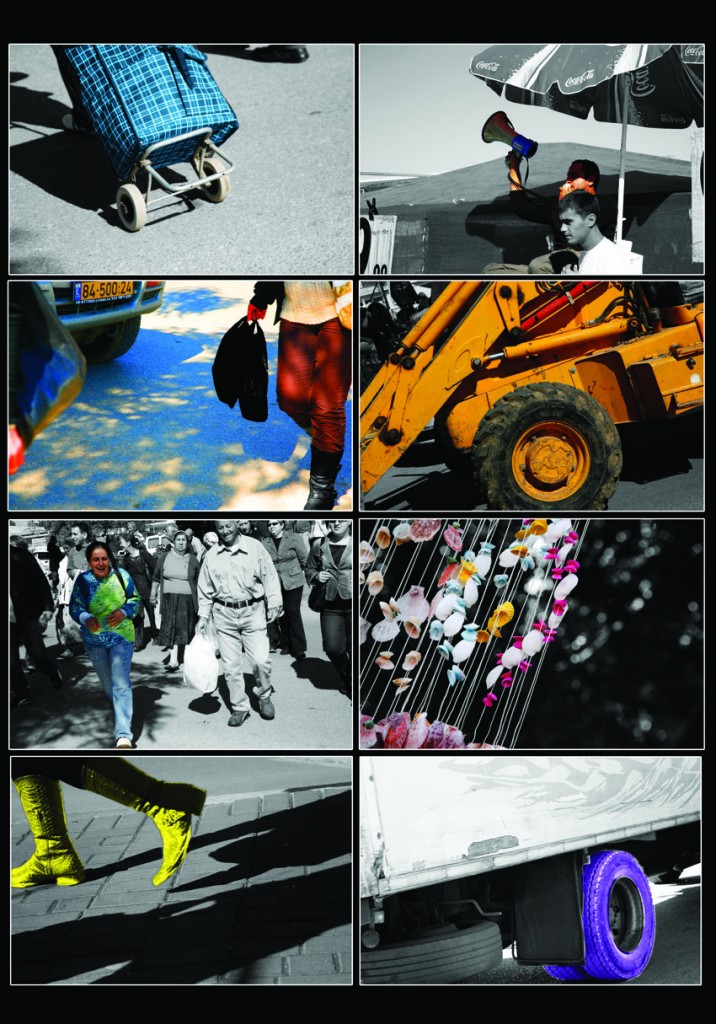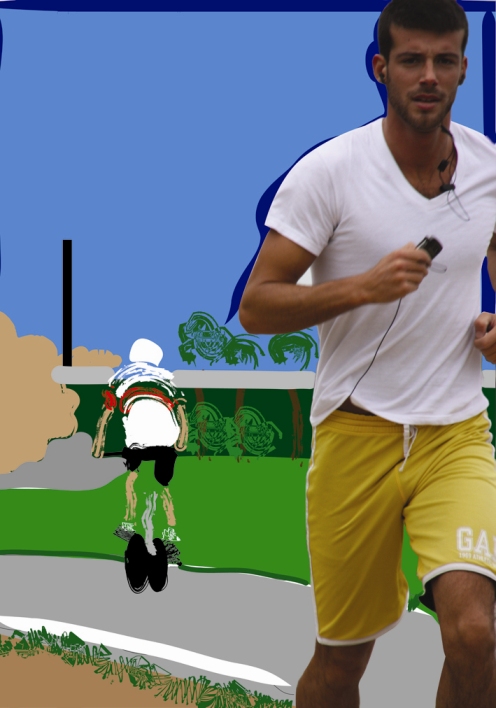A unique photography project at the Windows Gallery of the Azrieli Center shows something most people don’t see – a look at the world of visually challenged people. The project, initiated by Ido Yaari, in collaboration with Studio Gavra and The Center for the Blind in Israel, culminated in the exhibit Moments Blind People Can See which will be on display throughout the month of March, but there is more to the story than the eye can see.
Visually Challenged People (VCP) were paired with photographers to take pictures that are meaningful to the VCP, as selected and photographed by the VCP with the guidance of photographers from Studio Gavra. The VCPs then met with graphic designers to describe the concept behind the photos and their emotional connection to them. Based on these conversations, the graphic designers created a visual interpretation – much in the same way that our brains create memory images from the visual information gathered by our eyes.
The results were as varied as the individuals, creating an exhibit which reflects the richness, creativity, depth, and energy of the people who created these images. Each photo was accompanied by a short text describing the work and process. The photographs reflect not only the journey of the individual, but the encounter and exchange that took place in creating the image. Each photo is an invitation to join this encounter and come along on the journey.

Opening night was an exciting event as the photographers, designers, friends, families and a throng of visitors crowded the gallery. Shimon Roytbord, a 14½ year old from Kiryat Gat, took his photographer companion to the Shuk – the outdoor market – in Kiryat Gat. “I chose the Shuk because there is a lot of movement and noise and there is a lot to photograph. I aimed the camera. I heard the seller and took a picture of him shouting. I aimed at the sound, and actually, took pictures of the sounds.”
Milan Kerstman, a graphic designer, came into the project through an ad on facebook. Kerstman described the process, saying, “After the pictures were taken there was a meeting of photographers and graphic designers. Each photographer described the person they had worked with, and the graphic designers connected to the stories and worked with those people whose stories spoke to them.” Kerstman, who has children of her own, chose to work with Yair, aged 10. Knowing that children often have more difficulty expressing their thoughts and feelings in words, she felt that she may be better at making a connection with him. Yair spent an evening at Kerstman’s house, playing with her children: “they sat in the bedroom in the dark and told scary stories.” It was a fun evening for everyone, and not without insight. At one point Kerstman went down the stairs with Yair and the light went out. She held his hand and with the usual adult’s sense of responsibility for the child in her charge, thought “Uh, oh, what do I do now? I can’t reach the light switch without letting go of his hand.” Then realized that as someone who does not rely on his eyesight, Yair was just as comfortable in the dark stairwell as when the light was on – for him there was no problem in this situation. In fact, Yair is such a busy boy – riding his bike, swimming and playing piano –the only difficulty was finding a time when he was free to meet!

Beza Nebaba, a runner who participated in the Bejing Olympics and keeps himself busy by making his dreams come true – including a recent climb of Mount Everest – wanted to convey the fun and colorful world that runs through his head while he runs. Designer Aya Waltuch interpreted this vision through her use of primary colors combining illustration with photography to show the two worlds of the runner: internal and external.
Gidi Ahronovich – musician, educator and self-styled troublemaker took two photographers on a wild excursion that ultimately found its expression in multiple images. Gidi created a self-portrait of his life “between two rods” – the cane which he uses to navigate through the world and the conductor’s baton which symbolizes his daily triumphs over the challenges of work, music, and life.
The photographs, the stories and the people involved in their creation offer an opportunity to see our surroundings differently and take a look at the world from someone else’s perspective. The public is invited to come and be inspired.
AYELET DEKEL







Comments are closed.